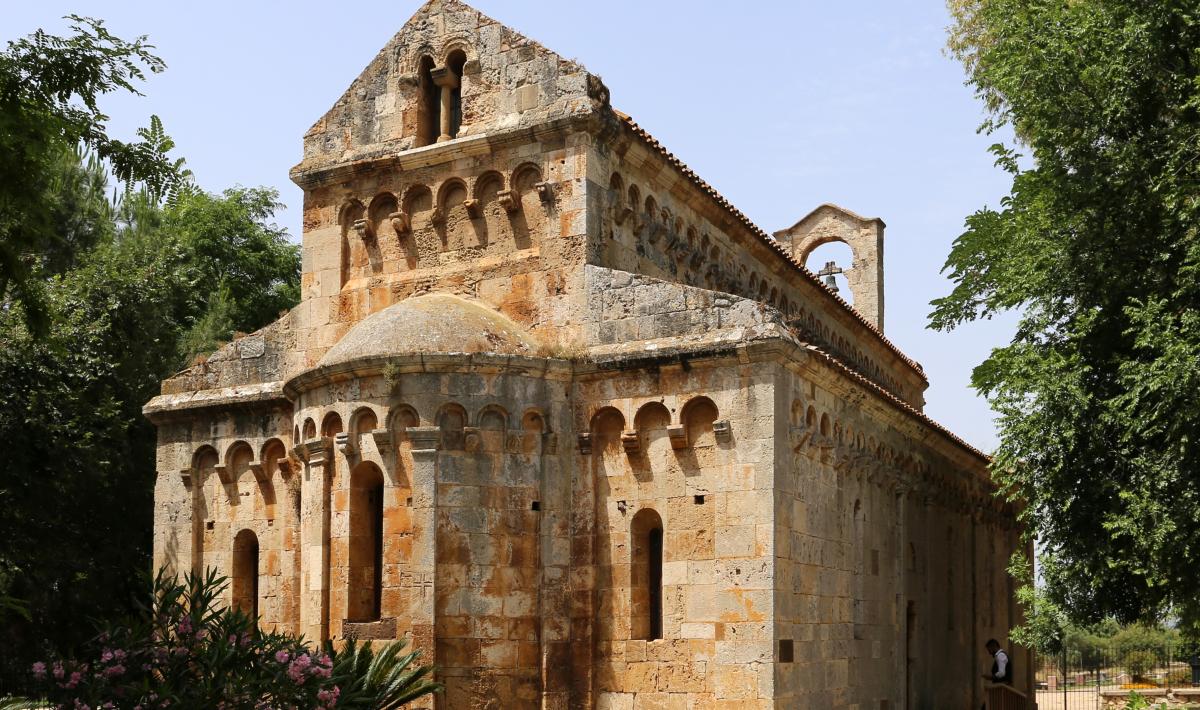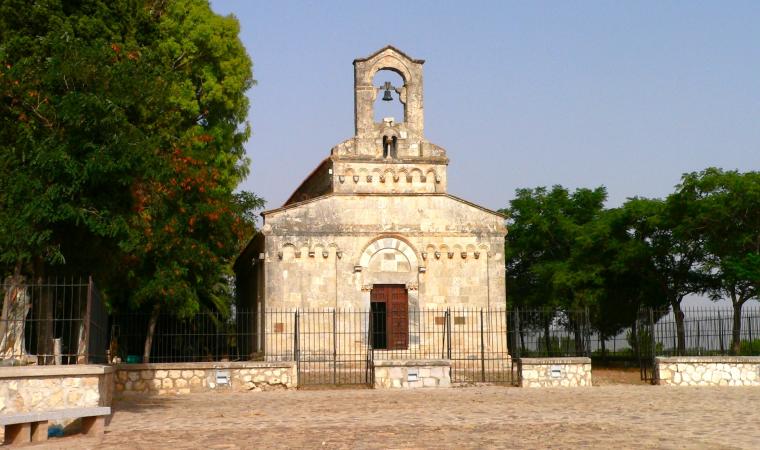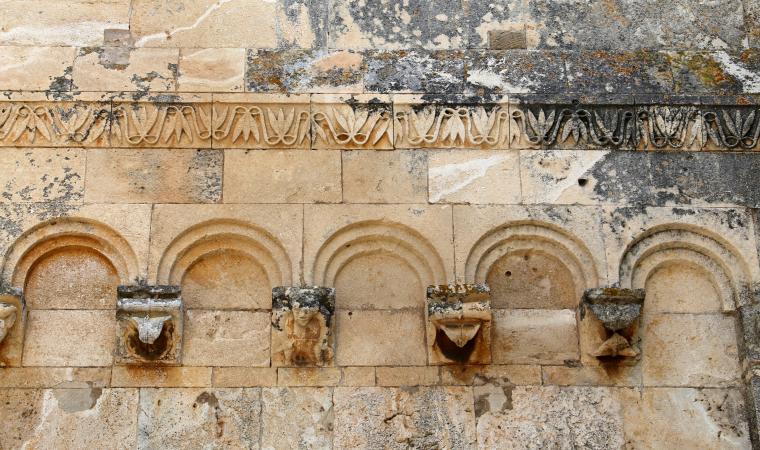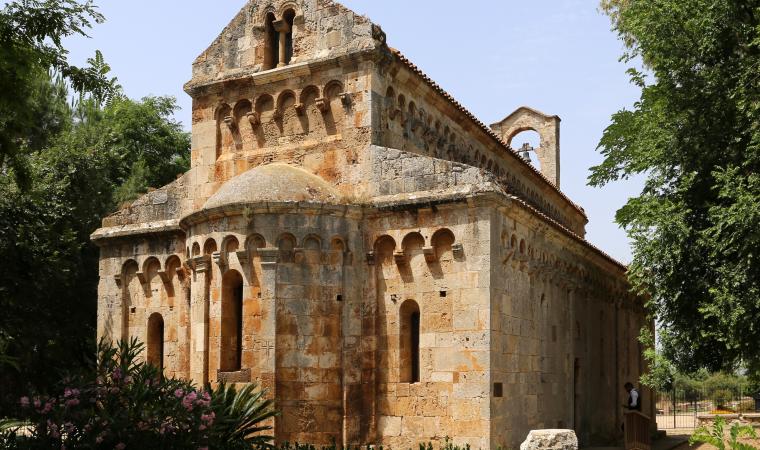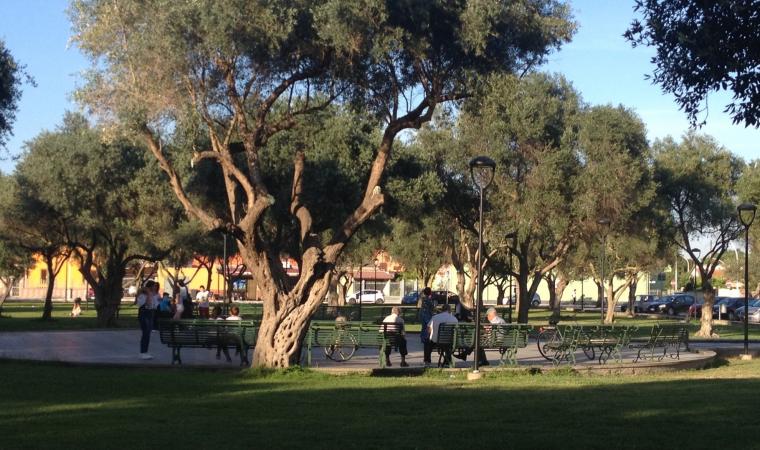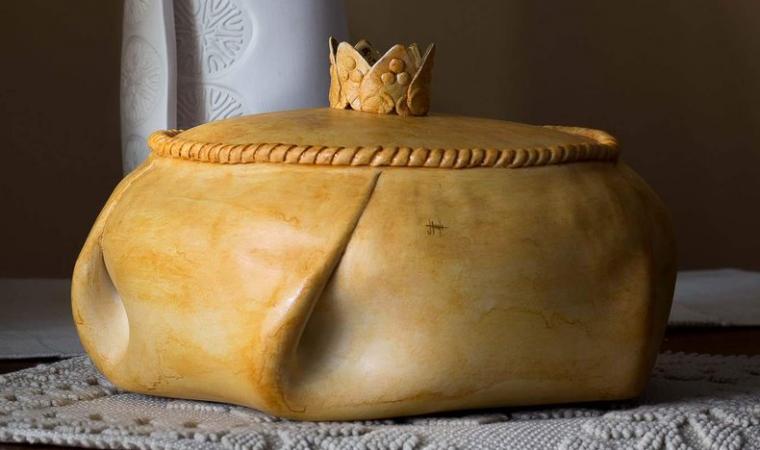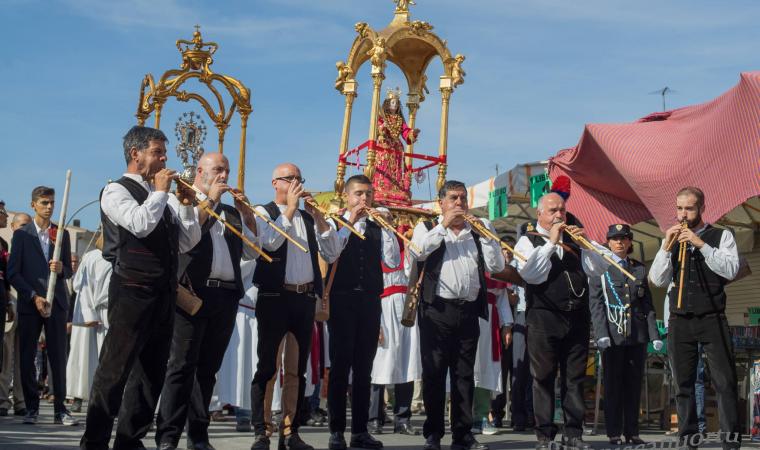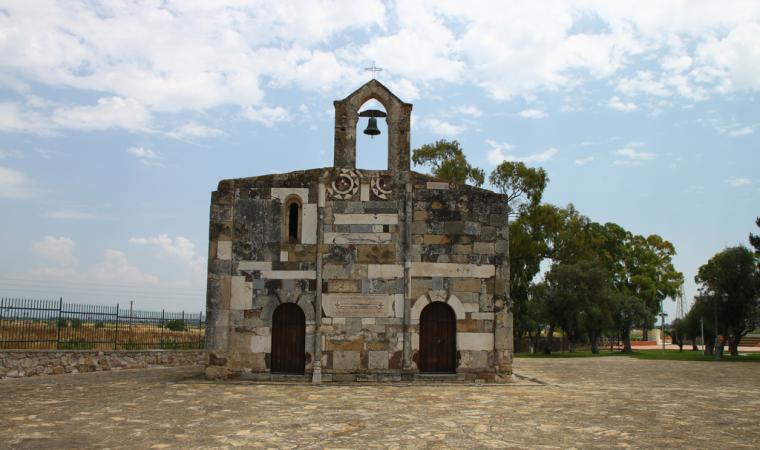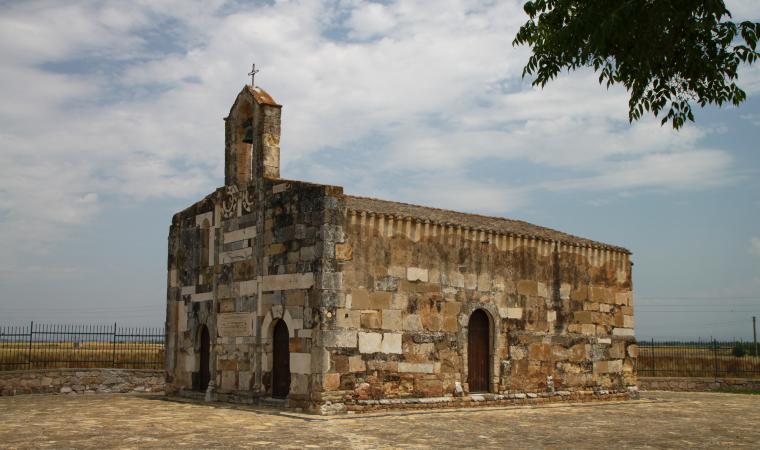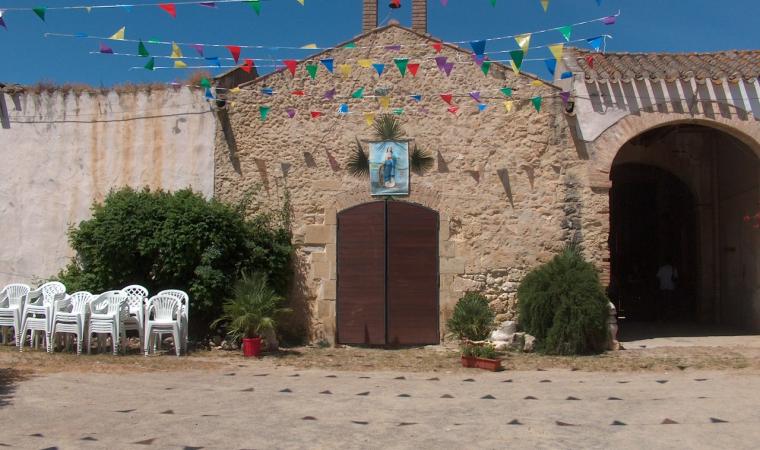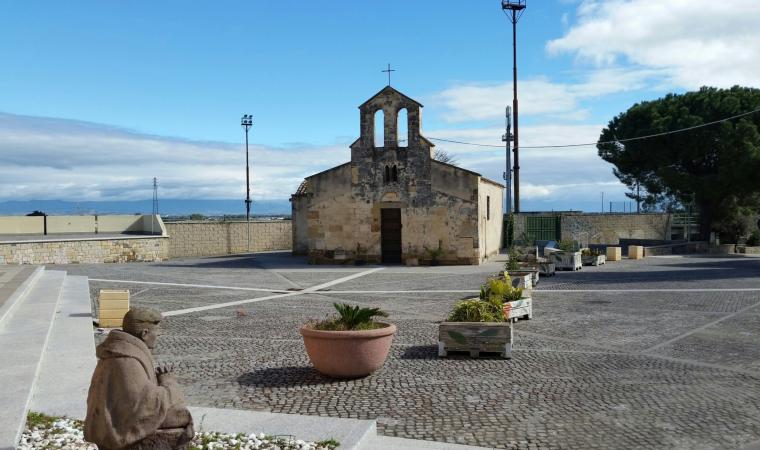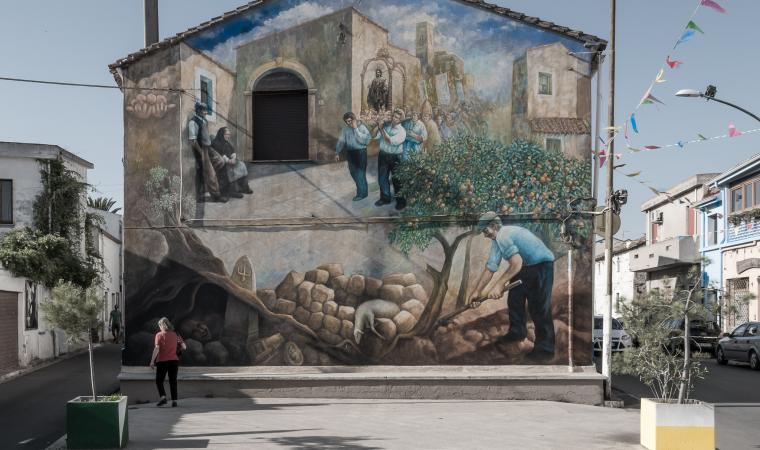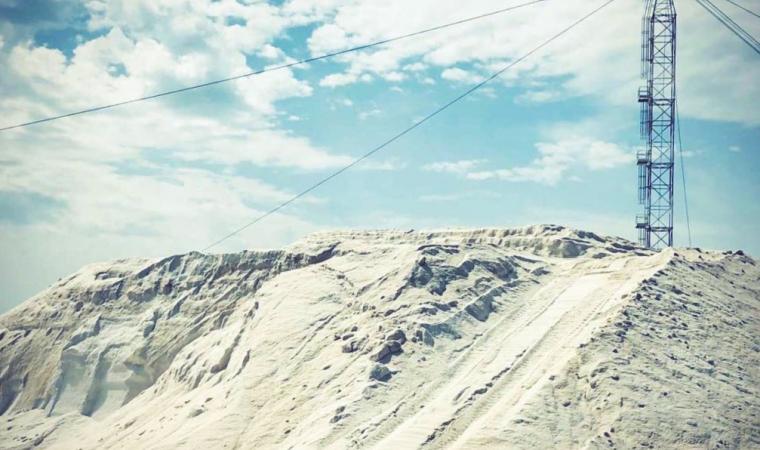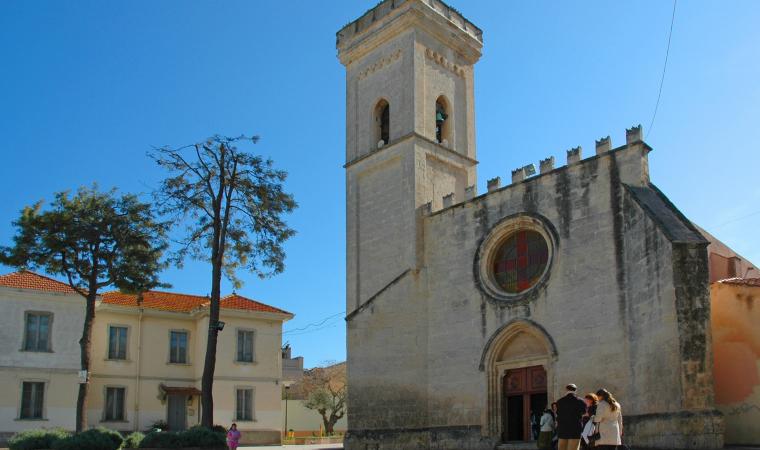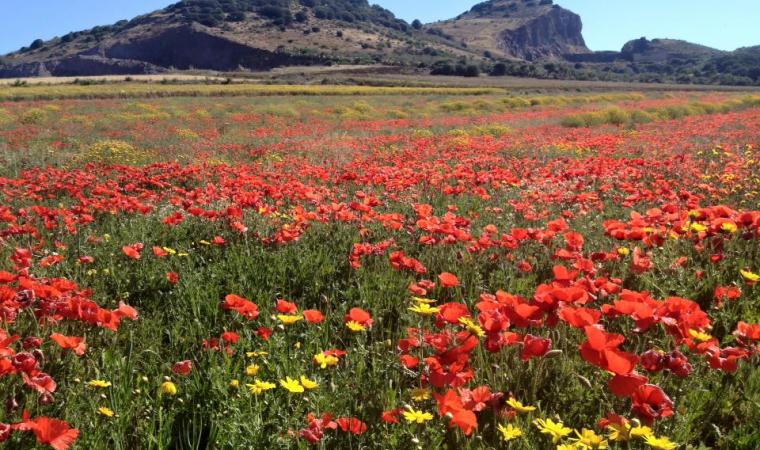A ‘mixture’ of techniques and styles, resulting from the use of workers from different places, a sudden ‘transformation’, a legend and some doubts about its origins make it one of the most valued and intriguing examples of Romanesque style in southern Sardinia. Santa Maria stands in the outskirts of Uta, a village with an agricultural vocation twenty kilometres from Cagliari. There are two theories about its construction: according to the first, the building dates back to the first half of the 12th century, the work of the Victorine monks of Marseille, who are thought to have created the last and most complete example of a Romanesque sanctuary of almost thirty attributed to them. The second theory ‘moves’ the building forward by a century - constructed on the ruins of a previous two-nave church built by the monks -, due to its affinity with the former cathedral of Santa Maria di Monserrato in Tratalias and particular symbols ‘spread’ around inside it.
The first documentary mention dates back to the second half of the 14th century and testifies to the transfer of ownership from the Knights Hospitaller of Saint John of Jerusalem to the Knights of Saint George of Alfama. In reality, the sanctuary was guarded by the Franciscans until the 17th century. The monastery’s rooms probably extended to the back of the church, in a fenced area later used as a cemetery. In the centre there is a well, which must have been ‘the heart’ of the cloister that has now disappeared. Popular belief attributes miraculous properties to the water in the well: miracles and healings are said to have occurred, so much so that, on the occasion of the September festival, numerous infirm people would go there on a pilgrimage.
The church was built with limestone, perhaps from the Teulada, quarries, with a basilica layout, three naves - originally two, and then extended to the south -, and a semicircular apse. The work of various builders, French, Arab and Tuscan, can be seen on the façade: the northern side and the left side of the façade are the result of French workmanship; the Tuscan school stands out in the lunette door, on the southern side and in the apse; the frieze separating the two orders of the façade is Arabian style. Each side has an opening: on the right the Holy Door, in the past opened exclusively during jubilees; on the left, the ancient access to the cloister. Inside, you will notice two Roman capitals, the first in the third column on the left and the second used as a holy water font. Looking at the apse from the outside, you will see two symbols: a patriarchal cross and an eight-pointed cross, probably the Maltese Cross. In an ashlar to the left of the south entrance, however, there is a cross pattée “a fiammata”, difficult to interpret: according to some, it cannot be ruled out that the Knights Templar also moved around Santa Maria or the surrounding area.
It’s a small leap from art to nature and, in fact, it is only a few kilometres from Uta to Monte Arcosu, where you’ll find the WWF Natural Oasis, and to the Park of Gutturu Mannu.

